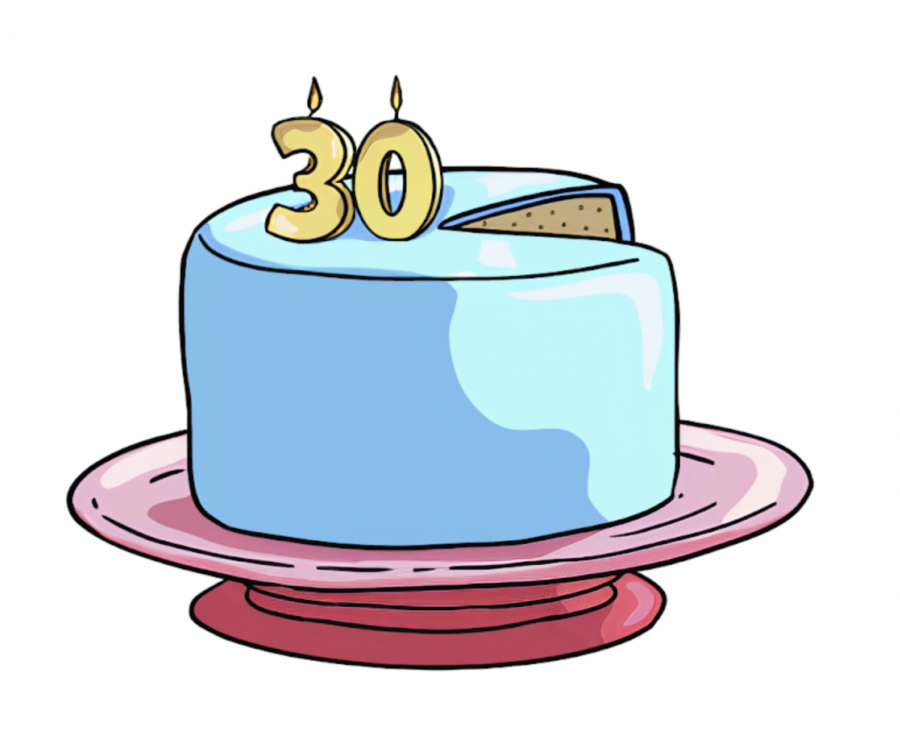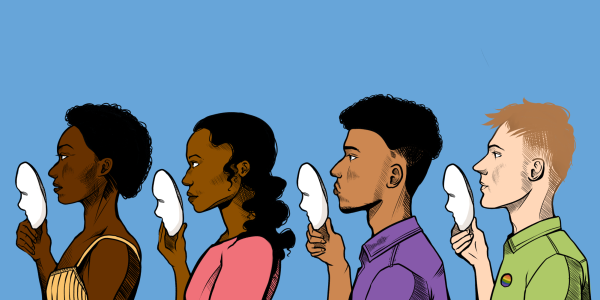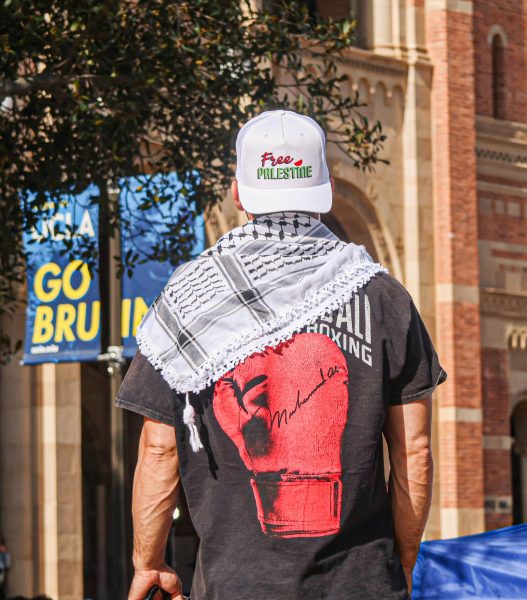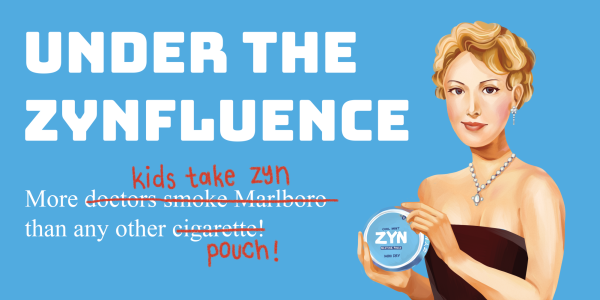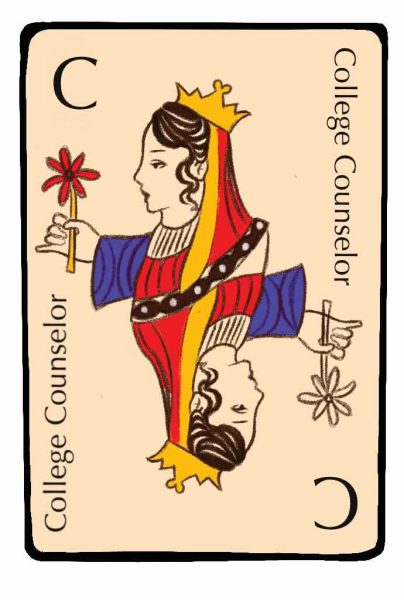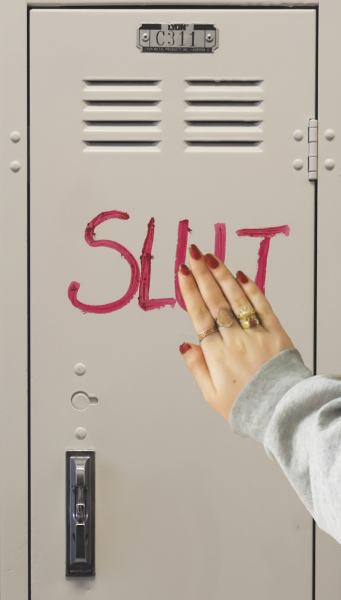Peer Support turns 30
Thirty years after its founding, community members share their experiences and memories of the Peer Support program.
Illustration by Fallon Dern and Sophia Musante
Peer Support, the school’s interpersonal counseling program, celebrates its 30th anniversary.
December 25, 2021
It is 6:30 p.m. in Chalmers 305. With their backs pressed against flipped-over desks, 14 students are seated facing each other. Unopened boxes of Animal Crackers and Lays potato chips are piled in the center of the room alongside a stack of the students’ silenced Nokia flip phones. It is 1991, and the first-ever Peer Support has begun. When the clock strikes 8 p.m., the cookies, chips and awkward tension will have all disappeared.
The 2021-2022 school year marks the 30th anniversary of Peer Support, a program that began as an interpersonal counseling program and gradually evolved into the largest club on campus.
In a 1991 interview with The Chronicle, then Director of Counseling Louise Macatee said Peer Support strives to create an open space to foster empathy and genuine communication.
“With Peer Support, we’re trying to achieve two things,” Macatee said. “First, we are giving people a chance to share what’s going on in their lives, to talk about concerns or issues. We’re also trying to teach people how to have more meaningful relationships by learning how to listen, share and develop their interpersonal skills.”
Former Peer Support leader Melanie Banders ’92 said the program’s organization is designed to initiate open communication between students.
“[Peer Support hosts] small groups designed to create an atmosphere where students can open up and talk about the world,” Banders said.
Current Peer Support Program Head Tina McGraw ’01 said she regrets having not joined Peer Support while attending the school as a student.
“In the late 90s it was a smaller program than it is now, but I heard from classmates who attended [back then] that they loved it,” McGraw said. “I am sad that I wasn’t able to have the student experience in Peer Support now that I get to see how special it is from my adult point of view.”
The Peer Support program model has evolved significantly since its founding
Peer Support has since expanded and adopted a leadership program in which four coordinators supervise 26 senior leaders and 26 junior trainees. The coordinators, leaders and trainees are split into 11 groups with roughly 30 students in each. Coordinators are responsible for delegating groups and handling any issues between group members, while leaders and trainees run Monday night group meetings. According to Coordinator Milo Kiddugavu ’22, there are about 650 group members this school year–roughly 70% of the entire upper school student body.
Kiddugavu said he is amazed by the changes within Peer Support since its founding and feels honored to be a part of such a positive community.
“I think it is so awesome to hear how different [Peer Support] has become since it first began,” Kiddugavu said. “I truly believe that Peer Support distinguishes the interconnectedness of our school from many others. In bringing different backgrounds and perspectives together with the intention of supporting each other for who we are, I feel as though we are able to establish a more safe and united atmosphere that really allows people to flourish, as they know they have people who will have their back no matter what.”
Coordinator Prentiss Corbin ’22 echoed Kiddugavu’s experience and said she admires the consistent effort the program has put forward to support students.
“I think Peer Support has really aimed to create a safe place for students as well as forge deeper connections in the school community, and I hope it continues to do so,” Corbin said.
Kiddugavu and Corbin work alongside Coordinator Estee Eidinger ’22 and Michael Lapin ’22 to lead the program, bringing a different perspective to the team, as both Kiddugavu and Corbin were new tenth graders. Kiddugavu said upon entrance into the school, interacting with both upperclassmen and other sophomores through Peer Support provided him a community he otherwise may not have found.
“I feel like learning about my new classmates and their personal lives brought a whole new element to my experience that really allowed me to get to know the community and not be afraid to put myself out there,” Kiddugavu said. “Additionally, knowing the upperclassmen made the campus less daunting as a sophomore. They gave me the confidence to try new clubs and opportunities our school boasts that I may have never tried, all of which have shaped me to the person I am now.”
Corbin shared a similar experience, and said as a Coordinator and group leader she tries to welcome sophomores and treat them with the same kindness her former leaders gave her.
“Peer Support 1000% improved my experience being a new sophomore,” Corbin said. “My [former]leaders also really took me under their wing and always checked in on me or said ‘Hi’ to me on the quad, which made me feel a sense of belonging in a relatively new environment. I have definitely tried to carry that on with the sophomores in my group.”
Underclassmen share perspectives on the program
Olivia Suddleson ’24, a member of Corbin’s group, said she sees her group as a safe and welcoming community.
“I am very lucky to have a great group with amazing leaders and a fun mix of people,” Suddleson said. “[The program] has opened doors to so many new friendships and created an environment that feels secure and judgment-free. The flexibility of the program makes it feel like there is zero pressure, which helps to make the club itself more comfortable.”
Josh Barnavon ’24 said he was surprised by how much he enjoys being a part of his group.
“My experience in Peer Support has been amazing,” Barnavon said. “When I first heard about the club, I was skeptical of how a group of strangers could develop such a high level of trust and confidentiality [with] each other. I now see there’s no age or grade level divide among the group, and everyone is treated with the same amount of respect. The club has been especially beneficial for me as a sophomore because I was able to meet new friends that I never would have met otherwise. As a sophomore on a new campus, it also made me feel much more included in the upper school community.”
Barnovan said he was initially doubtful of the high praise Peer Support received. Trainee Audrey Yang ’23 said these suspicions are not uncommon in the school community and she had similar feelings before joining the program.
“I had heard a lot about Peer Support from upper school students and how it was an amazing club that everyone should join,” Yang said. “Beyond that, however, everyone in Peer Support was very secretive about what the club was actually about, so when I first joined, I was excited but also rather nervous because I didn’t know anyone else who was in the club and I had no idea whether I would enjoy it.”
Yang said the privacy of Peer Support is tied to a popular phrase associated with the program: “Big C.” This “C”refers to confidentiality, and the requirement for group members to keep everything private, from serious shares to lighthearted games. Kiddugavu said in a 700-person program, those who break the rule are often caught, spoken to by the leaders or coordinators and expelled from the program. Yang said the respect for and importance placed upon confidentiality kept her coming back to her group every Monday night.
“I was in a fantastic group sophomore year, and I ended up looking forward to Monday night meetings every week,” Yang said. “My leaders were so dedicated and compassionate, and I developed a very close relationship with my group. I went from being unsure and hesitant about joining Peer Support to really loving both the purpose of the program and the people I got to know.”
Now Yang leads a group with Assistant Features Editor Harry Tarses ’23, Sophia Haynes ’22, Alex Shane ’22 and Cory Porter ’22. Yang said the program has helped her social intelligence and ability to interact with new people.
“Being a trainee has definitely required me to step outside of my comfort zone at times,” Yang said. “At first, I was extremely nervous about having to speak in front of an entire group of people, many of whom I don’t know. However, I realized that the main reason I was in [Peer Support] was to help others by listening with attentiveness and responding with empathy. This mindset took away the pressure of having to be the ‘perfect leader’ and encouraged me to be genuine and speak from my heart.”
Though group member Gabriel Levin ’23 said he largely agrees with the positive sentiment that surrounds Peer Support, he said the club still has room for improvement.
“All issues and topics are allowed to be discussed in Peer Support, which is awesome,” Levin said. “However, there are many situations which, in my opinion, require professional help. I think it would be beneficial for the program to make [getting professional help] less intimidating and provide a direct and accessible way to receive it.”
On the other hand, group member Andre Birotte ’23 said he feels content with the current state of Peer Support.
“I think the club is great as it is and isn’t in need of any urgent change,” Birotte said. “[It] is run and organized very well from my experience; the emphasis leaders put on confidentiality makes the space feel extremely safe as intended.”
Former and current leaders envision the program’s future
When reflecting on Peer Support’s history and legacy, former Coordinator Spencer Sherman ’21 said he is proud to have been a part of the program as a member, trainee and coordinator. Sherman said Peer Support serves a unique role in the community and is a program catered to students’ mental health and emotional well-being rather than rigid activities or goals.
“Peer Support serves as a rock for a lot of people,” Sherman said. “It’s a place to fully decompress and relieve yourself of the stress from the week, month or year. If you’re a part of it, you know it’s an entire community within the school. It doesn’t merely break barriers between grades. It helps form lifelong connections with people both older and younger than yourself, people whose lives could be vastly different from your own. It’s easy for me to say that Peer Support changed me for the better.”
Sherman said his experience perfectly aligns with McGraw’s definition of Peer Support’s legacy: Peer Support’s impact on students’ relationships and their perspectives on vulnerability.
“The program’s legacy is held in the memory of all of those who went through it,” McGraw said. “It is a legacy of human connection, empathy and growth. It is really about students forming friendships and deeper connections across grades and social groups. It is impossible to measure the impact that it has had on individuals and the community as a whole, but I have had many students tell me that being in Peer Support was their most meaningful experience at the school.”
Kiddugavu said he knows Peer Support will continue to be a staple of the school community. He said he hopes students in the future will keep working to create the best environment possible, as they have for the past 30 years.
“The 30th anniversary of Peer Support means a lot to me, as I have been given the chance to be a part of something bigger than myself,” Kiddugavu said. “Going forward, I want Peer Support to continue on the path that it has been on for these 30 years, only getting better and better as [graduating] classes introduce new ideas and change it for the better.”































